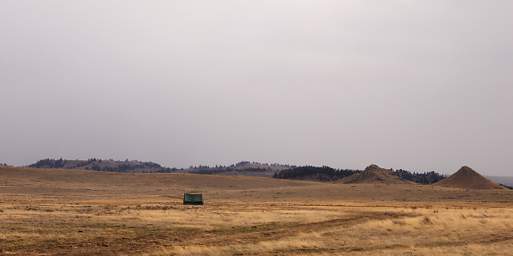
Sometime in the middle of winter Dona and I learned that Montana Audubon needed more volunteers to help count Sage Grouse. This happens in the spring out on the cold and windy plains of eastern Montana. I'd never seen any Sage Grouse and figured it was a good opportunity. Besides, that part of the world is pretty wild and seldom visited, and who knows what else might happen? So we signed up.
Shortly after we got back from Tanzania we got some training, and then it was time to go. Because of other obligations we didn't have a lot of free time, but we did squeeze in a few weekends. We borrowed Dona's mom's 4WD Jeep, packed it with the old wall tent my family learned to camp in, and headed east over the pass towards the country of the Missouri River breaks.
Our first day was a dry run; we were covering an area another couple had done for ten or so years; they met us and showed us the routes. Then we were on our own. The wind was blowing as it always dones out on the plains; we weren't sure the tent would hold up. We parked the jeep so it served as a partial wind-break, cooked dinner and enjoyed the sunset, then hit the sack. The birds are most active just before and after dawn, so we would be getting up early and driving to the first lek in the dark.
 |
| Our Little Tent on the Prairie |
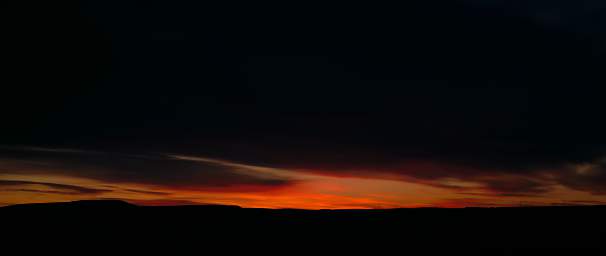 |
| Sunset |
 |
The Sage Grouse in eastern Montana are Greater Sage Grouse. We'd seen pictures of them, but neither of us had ever actually seen one. So while we thought we knew what we were looking for, we weren't sure how well our mind's eye would match reality. Out in the sagebrush I wasn't sure what the scale would be, or how easily we could spot them in the low light before dawn. But then the horizon started to lighten up a little and all of a sudden it was pretty obvious. The males were all strutting their stuff and they stick out like a sore thumb. The females are another matter, however. They blend in really well, and are often sitting rather than up wandering around. They slink in and out; one minute they're there, and the next they are gone.
We were primarily counting males, because they are relatively easy to get a good count on. Then we'd count the females. Dona and I would each count, and if we were lucky we'd agree. One of us would start on the left and the other would start on the right, but if there were a lot of birds they might be wandering on and off the lek or in and out of the brush by the time you had counted them all. So we didn't always agree.
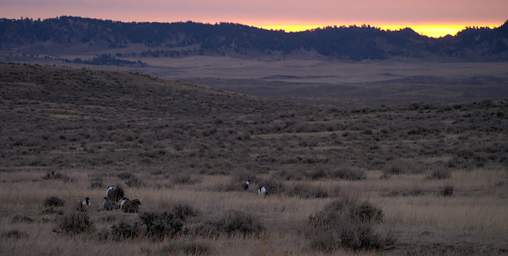 |
| Male Greater Sage Grouse Strutting their Stuff on a Lek |
The males fan out their spiky tails; fill up their air sacks, which are a deep yellow color and contrast markedly with their white neck and breast feathers; then forcefully let the air out, which makes a very low pitched "booming" noise. You can hear it from a long way away once you know what to listen for. Which of course all Sage Grouse do. So the males come together to see who's the studliest, and the females gather round them to see who would make the best mate.
We were monitoring because the state of Montana, and all western states which contain Sage Grouse habitat, are concerned they might be listed as an endangered species. That would result in various restrictions on development and land use, which farmers and ranchers, and the oil and gas industry and coal industries, really don't want. So states are trying to establish that they are managing the species in a manner which will insure its survival.
Farming and ranching is an issue primarily when habitat is destroyed and turned into cropland. That was the major issue in the area we were monitoring; good habitat was being plowed up to plant wheat, often on pretty marginal ground or in areas with marginal moisture.
But in other areas such as Wyoming and far eastern Montana, the bigger issue is oil and gas development. Habitat descruction takes many forms, and for the Sage Grouse the aural habitat is as important as the one you can see. As the landscape is criss-crossed with roads and dotted with thousands of wells, what once was a quiet environment has become a very noisy one, at least from the perspective of a Sage Grouse. They are in steep decline in these areas, and it seems unlikely they will recover.
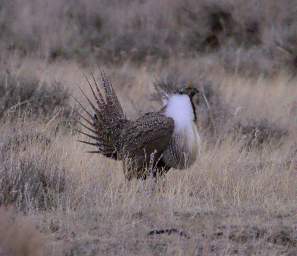 |
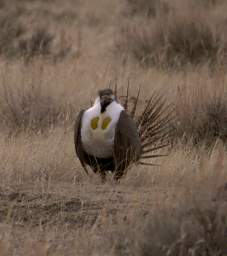 |
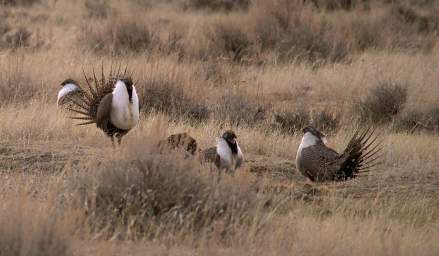 |
One morning we woke to the pitter patter of rain, which then turned to snow. This is gumbo country, a land of clay soils that turn to incredible mud when it rains. Even a 4WD vehicle isn't a guarantee you won't get stuck. And you really don't want to be stuck out at the end of the roads in this land of few people. So we decided to drive to one of the "nearby" towns and see some country along the way. Nearby, in this case, is about 60 miles away.
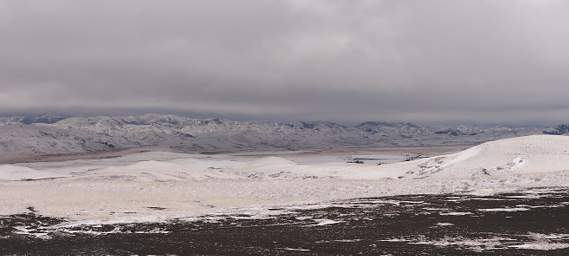 |
| Bears Paw Foothills |
 |
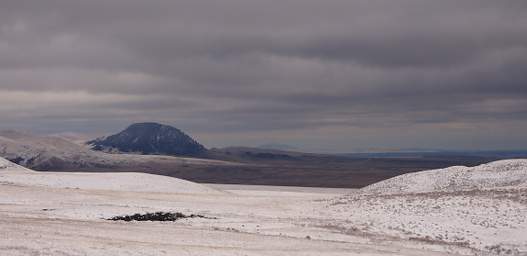 |
| Bears Paws | |
 |
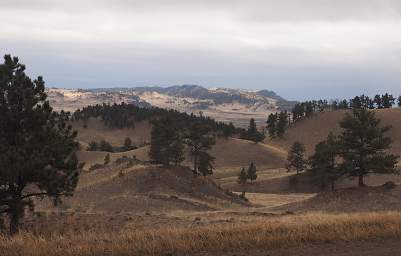 |
| Bears Paw Hills | |
 |
| Bears Paw Foothills |
When the weather was nice, it was gorgeous. A lot of wildlife moves around in the early morning and late evening, and beds down during the middle of the day. Since we were out and about in the early morning, we got a chance to see things we might not otherwise.
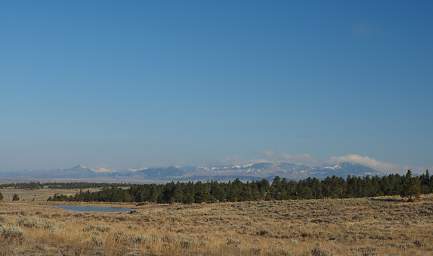 |
| Bears Paws |
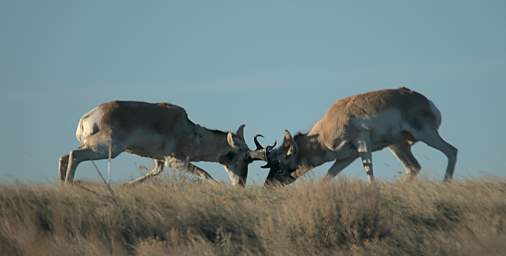 |
| Pronghorns Sparring |
But we didn't have the luxury of sitting and watching the wildlife we saw, as we had to zip from one lek to the next before the morning was used up. Which was ok, as long as the lek had birds.
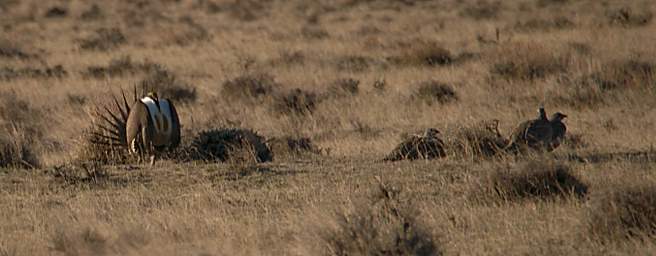 |
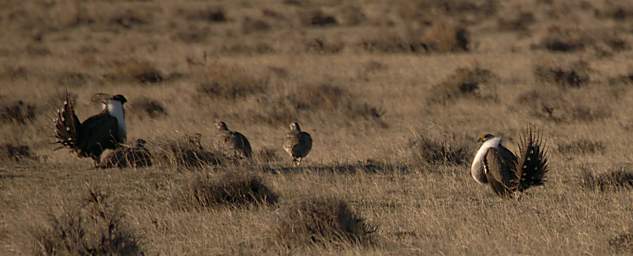 |
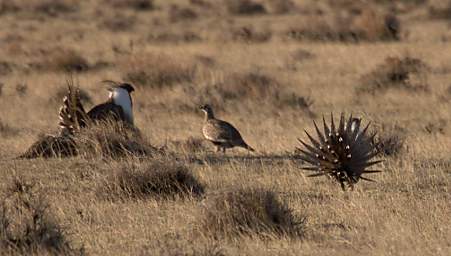 |
 |
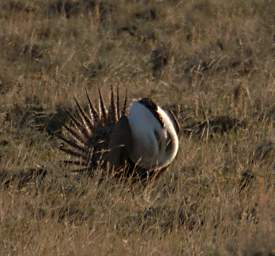 |
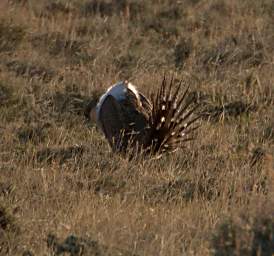 |
On one trip I camped out at the end of the road on the edge of the breaks. It was wild, windy country. I took a hike short hike of a mile or two down into the maze of gulleys, and would have liked more time to explore.
 |
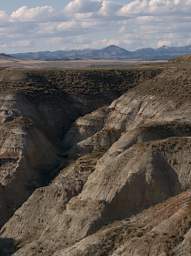 |
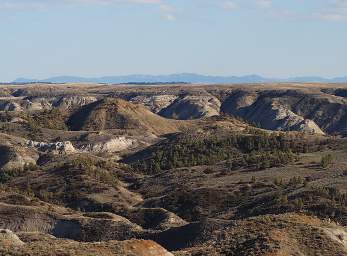 |
| The Breaks | ||
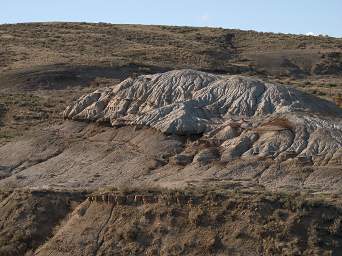 |
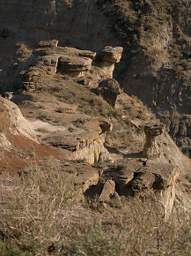 |
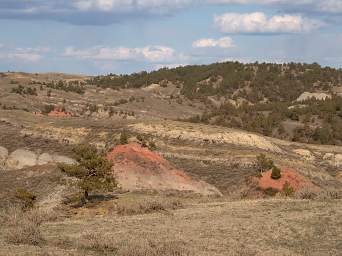 |
From my camp I spotted a young bighorn sheep, a treat on any occasion.
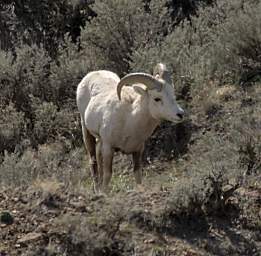 |
| Bighorn Sheep |
As well as counting birds, we were supposed to gather feathers for DNA analysis if we could. That would help with the population estimates. In the photo below you can see small fleks of white on the lek; those are feathers. But the problem is the wind is always blowing, and you don't want to disturb the birds. So you come back in the middle of the day when the birds are gone, and hope the feathers have hung up on some sagebrush or grass and not blown clear to North Dakota.
 |
| A few birds on a big lek |
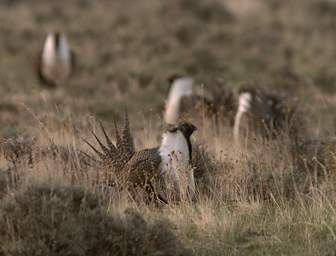 |
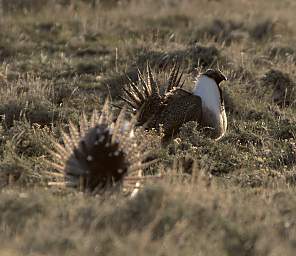 |
 |
During the middle of the day if we found a pond which wasn't frozen, there were usually some ducks on it. And since it was spring, the Meadowlarks were starting to appear.
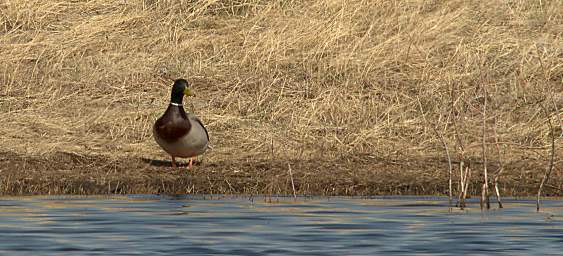 |
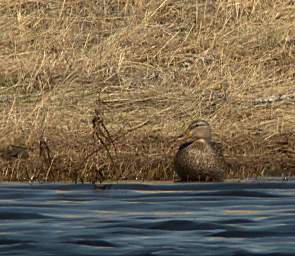 |
| Mallards | |
 |
| Meadowlark |
Then we would drive home to the Blackfoot Valley, where it was still Winter. Spring was coming, but it would be another month or so before it would feel much like it.
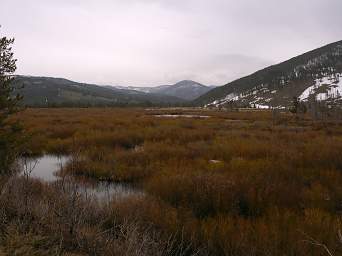 |
| Upper Blackfoot River Valley |